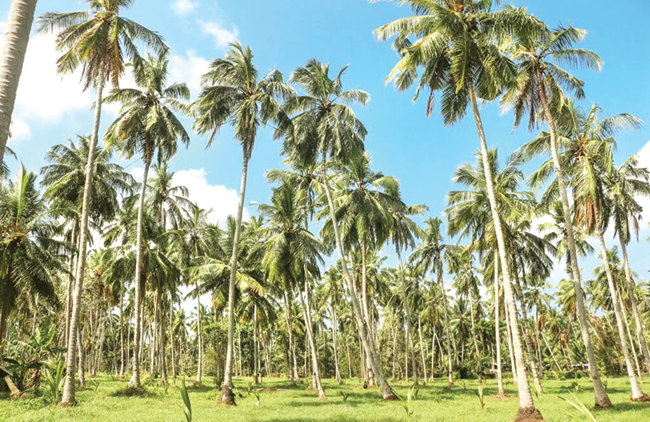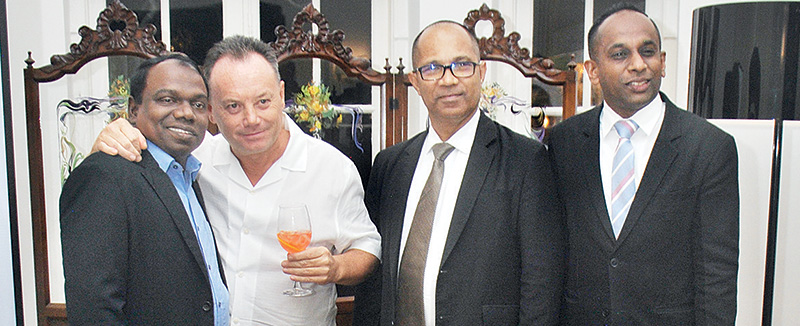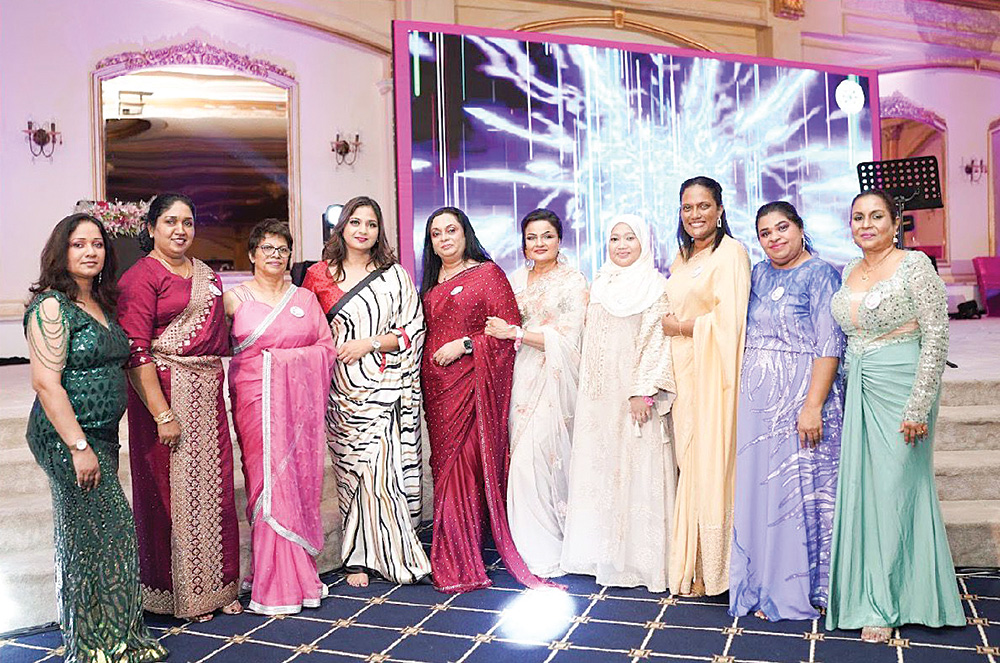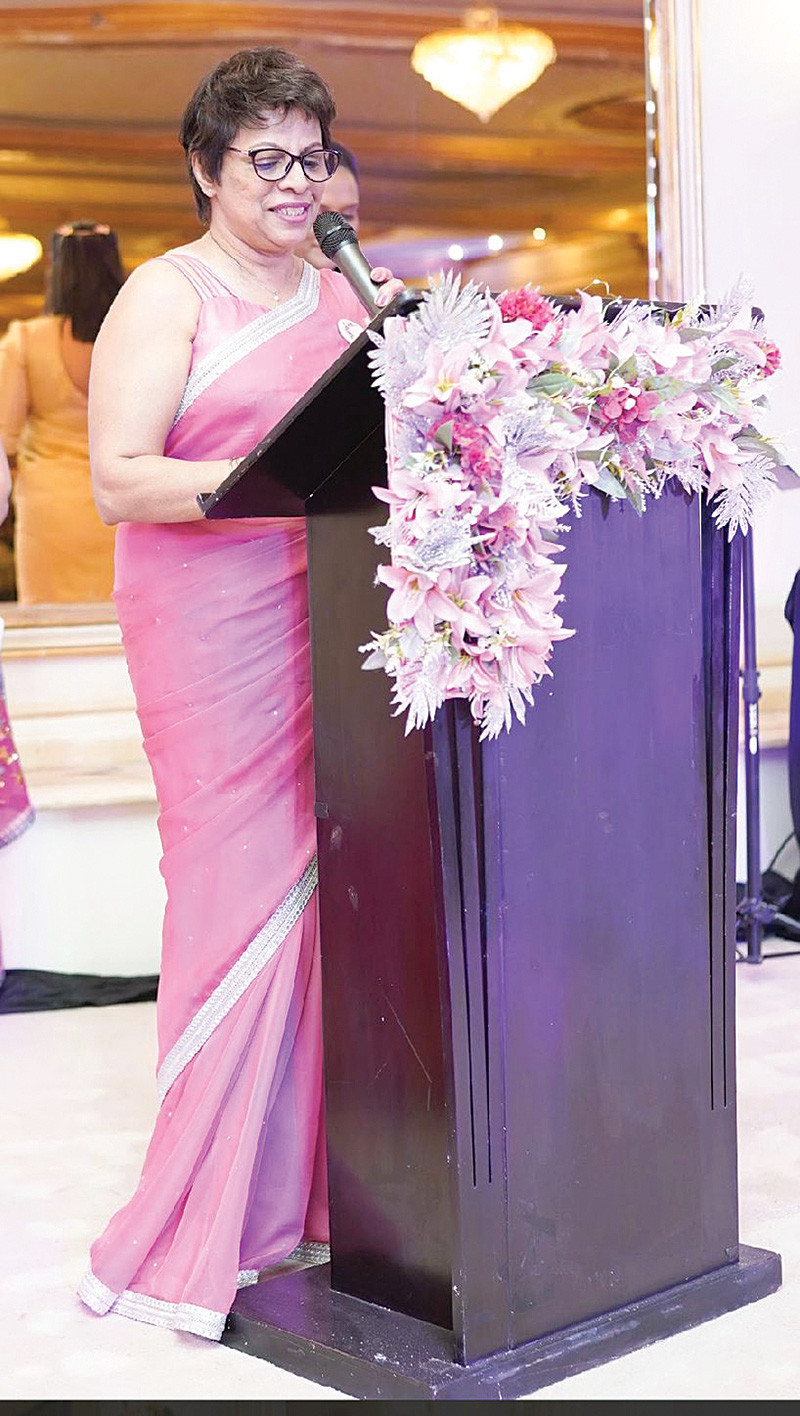Life style
In Sri Lanka,This Centuries – Old Spirit Is Shaking up The Local Cocktail Scene
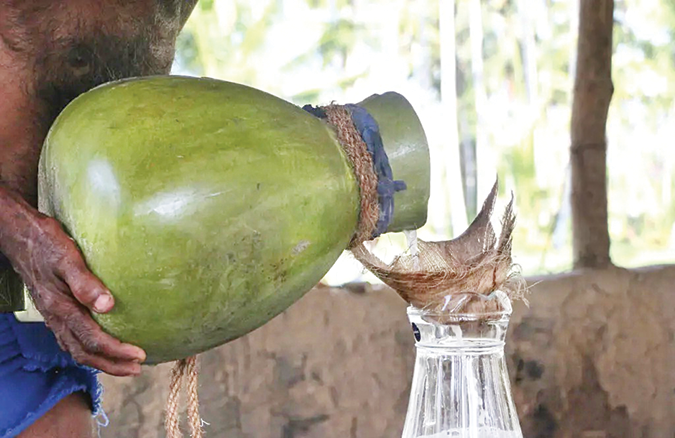
And being served in trendy bars from London to Cologne
By Zinara Ratnayake
At an 18-acre coconut garden of Rockland Distilleries in Nattandiya, just north of Sri Lanka’s capital Colombo, Roy Jayalath begins his work early in the morning. Jayalath climbs tall, swaying coconut trees to collect the white, milky sap of their flowers. Balancing on two coir ropes, he walks across these tightropes from tree to tree until he collects enough sap to fill a pot. Coconut sap is the raw material for coconut arrack, an alcoholic beverage unique to Sri Lanka. Although this method of collecting sap, known as toddy tapping, has existed in Sri Lanka for about 2,000 years, arrack has only recently begun to reach trendy bars and foreign shores.
High-quality coconut arrack only has two ingredients: sap and water. When it’s fresh from the tree, the sap is sweet, tangy, and slightly spicy, with a strong fragrance of coconuts; it contains natural sugars and yeast, allowing the sap to naturally ferment into a wine-like drink called toddy, with an alcohol percentage of about four percent. A few hours after extraction, the alcohol content increases to about seven percent. The toddy is then distilled like whiskey; the alcohol level goes up to about 60 percent, at which point the drink is then watered down to 40 percent and aged in Halmilla (a tree that grows in Asian tropics) wooden vats for at least three years before the liquid is bottled.
The garden employs six “toddy tappers” including Jayalath, now 56, who tapped his first toddy at the age of 13 after seeing his two uncles climbing coconut palms. Jayalath shimmies up the trees twice a day now: once in the morning to collect sap, and again later in the day to tap each tree’s unopened inflorescence, or cluster of flowers, with a mallet to stimulate toddy flow. He collects sap from 100 trees every day.
Rapti Dirckze, Head of Conservation at Rockland Distilleries, explains that toddy tapping is a generational craft passed down from father to son, but notes that it’s difficult to find young tappers today—despite the fact that a skilled tapper can earn decent pay of about 120,000 rupees ($470) a month. “People think it’s a job with low status, so the young generation wants to find other jobs,” she says.
Jayalath’s children, for instance, have moved into other labor work, he explains as he presses his palms together and says a prayer before ascending a tree. “[The prayer] keeps me safe,” he says, smiling. “The hardest part is to climb up. Most people think that walking on the rope is scary. Not for me. I’m used to it.”
There’s little evidence to suggest arrack’s origins, but according to oral history, centuries ago, toddy was given to elephants in the king’s army before battle. Robert Knox, a British sea captain who spent 19 years in Sri Lanka as a captive, wrote in his 1681-book An Historical Relation of the Island Ceylon that captives distilled arrack to drink. In the mid-1600s, the Dutch began the commercial planting of coconut trees on the west coast of Sri Lanka and exported coconut arrack to Malaysia and several Indian destinations.
“We call this area the toddy belt of Sri Lanka,” says Dirckze, noting that this region extends from Chilaw in the north to Matara in the south. “The best toddy is from here.”
Sri Lanka has had a complicated relationship with arrack over the past few centuries. When the British took over Sri Lanka’s coastal belt in 1796, they seized control of the arrack trade. Arrack production slowly declined over the following decades. There were many reasons for this, writes Michelle Gunawardana in the book The Adventure of Arrack: not only did importing countries impose heavy duties, but the British East India Company also later banned the transport of arrack and discouraged imports into Britain.
By the 1830s, the British had also tightened local production, ensuring that only licensed entities could produce and sell arrack. The British government later established the Department of Excise, which exists today, to control the illegal trade and allow only large-scale businesses to produce the drink.
Around the ‘60s to ‘70s, when the coconut supply decreased due to severe droughts and labor shortages, some distilleries began to produce different arrack blends. Because these usually didn’t include much coconut, they were much cheaper than traditional arrack. The prevalence of such alternatives labeled arrack as a cheaper drink for the masses, explains Dirckze.
According to Nadira Jayasuriya, director of development at the Botanik Bistro and Bar in Colombo, local distilleries like Rockland are driving much of this surge, and customers are spreading the word on social media. She believes the growing enthusiasm is a sign that people are becoming increasingly interested in embracing native ingredients.
“There’s a global trend to highlight everything local. The pandemic made it even clearer,” she says, explaining that COVID-related restrictions limited imports and drove people to pay more attention to locally available ingredients.
“Earlier, people wouldn’t come to a bar and order arrack, but now they do, even when we have whiskey or scotch on the menu,” says mixologist Dhanushka Dias, who developed the cocktail menu at ColomBar, an arrack-focused bar at Colombo’s Cinnamon Lakeside hotel.
ColomBar’s assistant restaurant manager Mischel Bandara agrees. “ColomBar began as a destination bar to introduce Sri Lankan elements like coconut arrack to foreign tourists,” he says, “but it became so popular with locals. People come and order arrack bottles now, not just glasses.”
Rockland now produces several coconut arrack varieties, including a new premium blend called Ceylon Arrack, which is a mix of three-year, seven-year, and 10-year aged arracks. The taste is clean and smooth, with a robust coconut aroma.
One cocktail Dias developed is called Dodola, made with Ceylon Arrack, coconut milk, jaggery, nutmeg, and cardamom. The flavour is reminiscent of the popular Sri Lankan sweetmeat dodol. “When I told customers that I have arrack cocktails, they were reluctant,” he recalls. “But I was confident. And I was right. They loved it.”
Dias also created a cocktail called Padikkama, which tastes similar to bulath wita, a local betel-leaf-and-betel-nut mix commonly eaten after meals. “My idea was to develop cocktails with local elements, and when I thought of the days I spent with my grandparents, I wanted to recreate those flavours,” he says.
Another factor contributing to the increasing attention around coconut arrack is the growth of tourism. “When foreigners come here, they don’t want to sip a Scottish or gin cocktail. They ask for something local, something that is ours,” Jayasuriya says. Botanik Rooftop Bistro & Bar serves two cocktails made with Ceylon Arrack, both featuring many locally sourced ingredients: one includes pandan, king coconuts, and kithul treacle (made with the sap of fishtail palm), while the other includes tamarind and passion fruit.
“We had no idea how customers would react, but they are our bestsellers now,” he says.
Mixologist Nabeel Kenny, who works at the upmarket restaurant Monsoon Colombo, also sees the demand for arrack among tourists. “Customers ask us whether we have arrack cocktails,” says Kenny, who is now also developing arrack-based cocktails.
The popularity of arrack is no longer limited to Colombo or Sri Lanka. Coconut arrack is now a crowd favourite in London, where the ingredient is served in cocktails at trendy South Asian restaurants like Hoppers London and The Coconut Tree. Even celebrity bartender Ryan Chethiyawardene, who was brought up in Birmingham by his Sri Lankan parents, uses the spirit in mixed drinks.
“Arrack, one of the oldest and almost forgotten spirits from my homeland, has a very special place in our bar,” says Indika de Silva, owner of the cocktail bar Toddy Tapper in Germany. His hope is to offer a “cultural taste journey” with flavours and ingredients that are lesser known to the German crowd. One of the bar’s most popular cocktails is Jack & Jill, which features Ceylon Arrack, cardamom, jackfruit, and calamansi, among other ingredients.
Despite historical impediments, Sri Lankan distilleries and mixologists are reclaiming their pride in the centuries-old tradition of coconut arrack—and redefining it in innovative ways. “When someone says Mexico, people think of tequila. I want the world to think of coconut arrack when they hear the name Sri Lanka,” says Dias, “It’s our history and culture blended in one drink. We must celebrate it.” (BBC )
Life style
Celebration of taste, culture and elegance

Italian Cuisine Week
This year’s edition of Italian Cuisine Week in Sri Lanka unfolded with unmistakable charm, elegance and flavour as the Italian Embassy introduced a theme that captured the very soul of Italian social life ‘Apertivo and’ Stuzzichini’ This year’s celebration brought together diplomats, food lovers, chefs and Colombo’s society crowd for an evening filled with authenticity, refinement and the unmistakable charm of Italian hospitality.
Hosted at the Italian ambassador’s Residence in Colombo, the evening brought Italy’s golden hour ritual to life, embracing the warmth of Mediterranean hospitality and sophistication of Colombo social scene.
The ambience at the residence of the Italian Ambassador, effortlessly refined, evoked the timeless elegance of Milanese evening culture where ‘Apertivo’ is not just a drink , but a moment of pause, connection and pleasure. Guests were greeted with the aromas of apertivo classics and artisanal stuzzichini,curated specially for this edition. From rustic regional flavours to contemporary interpretations the embassy ‘s tables paid homage to Italy’s diverse culinary landscape.
, Italy’s small bites meant to tempt the palate before meal. Visiting Italian chefs worked alongside Colombo’s leading culinary teams to curate a menu that showcased regional authenticity though elegant bite sized creations. The Italian Ambassador of Italy in Sri Damiano Francovigh welcomed guests with heartfelt remarks on the significant of the theme, highlighting how “Apertivo”embodies the essence of Italy’s culinary identity, simple, social and rooted in tradition.
Sri Lanka’s participation in Italian Cuisine Week for ten consecutive years stands as a testament to the friendship between the two countries. This year focus on ‘Apertivo’ and ‘Stuzzichini’ added a fresh, dimension to that relationship, one that emphasised not only flavours, but shaped cultural values of hospitality, family and warmth. This year’s ‘Apertivo’ and “Stuzzichini’ theme brought a refreshing twist to Italian Cuisine Week. It reminded Sri Lankan guests t hat sometimes the most memorable culinary experiences come not from elaborate feasts but from the simplicity of serving small plates with good company.
Italian Cuisine Week 2025 in Sri Lanka may have showcased flavours, but more importantly it showcased connection and in the warm glow of Colombo’s evening Apertivo came alive not just as an Italian tradition.
(Pix by Dharmasena Wellipitiya)
By Zanita Careem
The Week of Italian Cuisine in the World is one of the longest-running thematic reviews promoted by the Italian Ministry of Foreign Affairs and International Cooperation. Founded in 2016 to carry forward the themes of Expo Milano 2015—quality, sustainability, food
safety, territory, biodiversity, identity, and education—the event annually showcases the excellence and global reach of Italy’s food and wine sector.
Since its inauguration, the Week has been celebrated with over 10,000 events in more than 100 countries, ranging from tastings, show cooking and masterclasses to seminars, conferences, exhibitions and business events, with a major inaugural event hosted annually in Rome at the Farnesina, the HQ of the Italian Ministry of Foreign Affairs and International Cooperation.
The 10th edition of the Italian Cuisine Week in the World.
In 2025, the Italian Cuisine Week in the World reaches its tenth edition.
The theme chosen for this anniversary is “Italian cuisine between culture, health and innovation.”
This edition highlights Italian cuisine as a mosaic of knowledge and values, where each tile reflects a story about the relationship with food.
The initiatives of the 10th Edition aim to:
promote understanding of Italian cuisine, also in the context of its candidacy for UNESCO Intangible Cultural Heritage;
demonstrate how Italian cuisine represents a healthy, balanced, and sustainable food model, supporting the prevention of non-communicable diseases, such as cardiovascular diseases and diabetes;
emphasize the innovation and research that characterize every stage of the Italian food chain, from production to processing, packaging, distribution, consumption, reuse, and recycling
The following leading hotels in Colombo Amari Colombo, Cinnamon Life, ITC Ratnadipa and The Kingsbury join in the celebration by hosting Italian chefs throughout the Week.
- Jesudas, chef Collavini,Travis Casather and Mahinda Wijeratne
- Barbara Troila and Italian Ambassador Damiano F rancovigh
- Janaka Fonseka and Rasika Fonseka
- Mayor Balthazar and Ambassador of Vietnam,Trinh Thi Tam
- Anika Williamson
- Alberto Arcidiacono and Amber Dhabalia
- Thrilakshi Gaveesha
- Dasantha Fonseka and Kumari Fonseka
Life style
Ethical beauty takes centre stage

The Body Shop marked a radiant new chapter in Sri Lanka with the opening of its boutique at One Galle Face Mall, an event that blended conscious beauty, festive sparkle and lifestyle elegance. British born and globally loved beauty brand celebrates ten successful years in Sri lanka with the launch of its new store at the One Galle Face Mall. The event carried an added touch of prestige as the British High Commissioner Andrew Patrick to Sri Lanka attended as the Guest of honour.
His participation elevated the event highlighting the brand’s global influence and underscored the strong UK- Sri Lanka connection behind the Body Shop’s global heritage and ethical values.
Celebrating ten years of the Brand’s presence in the country, the launch became a true milestone in Colombo’s evolving beauty landscape.
Also present were the Body Shop Sri Lanka Director, Kosala Rohana Wickramasinghe, Shriti malhotra, Executive chairperson,Quest Retail.The Body shop South Asia and Vishal Chaturvedi , Chief Revenue Officer-The Body South Asia The boutique showcased the brand’s
complete range from refreshing Tea Tree skin care to the iconic body butters to hair care essentials each product enhancing the Body Shop’s values of cruelty ,fair trade formulation, fair trade ingredients and environmentally mindful packaging.
The store opening also unveiled the much anticipated festive season collection.
With its elegant atmosphere, engaging product experiences and the distinguished present of the British High Commissioner, it was an evening that blended glamour with conscience With its fresh inviting space at Colombo’ premier mall, the Body Shop begins a a new decade of inspiring Sri Lankan consumers to choose greener beauty.
Life style
Ladies’ Night lights up Riyadh
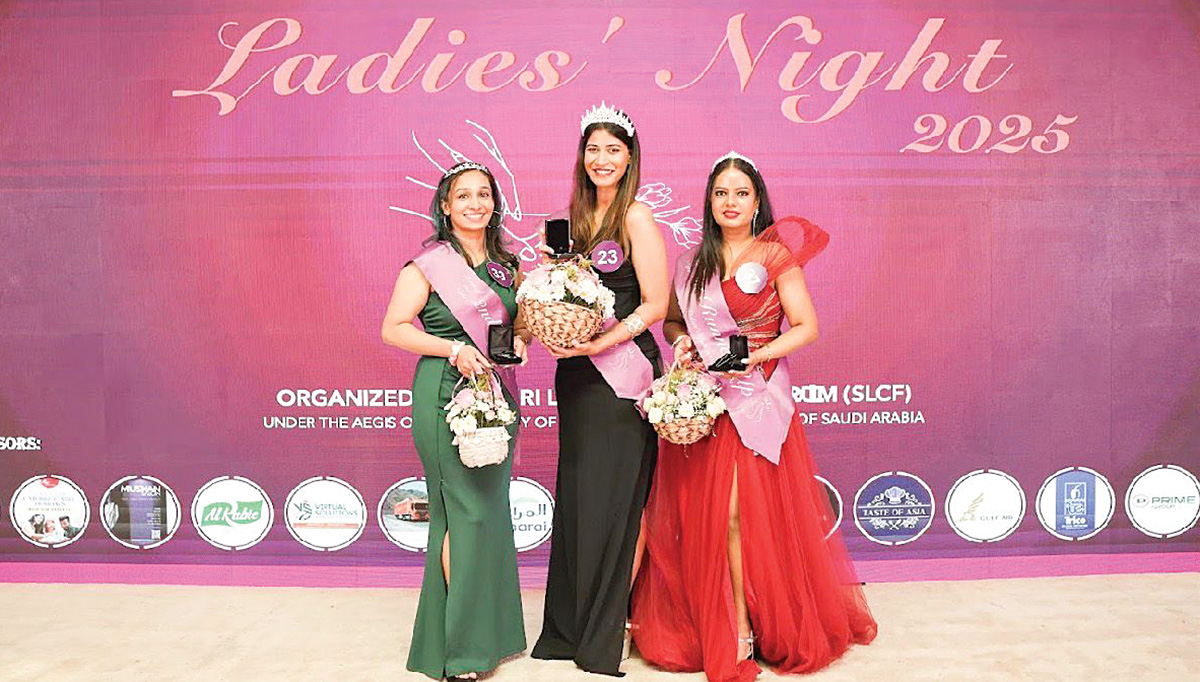
 The Cultural Forum of Sri Lanka in Riyadh, Saudi Arabia brought back Ladies’ Night 2025 on November 7 at the Holiday Inn Al Qasr Hotel. After a hiatus of thirteen years, Riyadh shimmered once again as Ladies’ Night returned – an elegant celebration revived under the chairperson Manel Gamage and her team. The chief guest for the occasion was Azmiya Ameer Ajwad, spouse of the Ambassador of Sri Lanka to K. S. A. There were other dignitaries too.
The Cultural Forum of Sri Lanka in Riyadh, Saudi Arabia brought back Ladies’ Night 2025 on November 7 at the Holiday Inn Al Qasr Hotel. After a hiatus of thirteen years, Riyadh shimmered once again as Ladies’ Night returned – an elegant celebration revived under the chairperson Manel Gamage and her team. The chief guest for the occasion was Azmiya Ameer Ajwad, spouse of the Ambassador of Sri Lanka to K. S. A. There were other dignitaries too.
The show stopper was Lisara Fernando finalist from the voice Sri Lankan Seasons, wowed the crowd with her stunning performances. The excitement continued with a lively beauty pageant, where Ilham Shamara Azhar was crowned the beauty queen of the night. Thanks to a thrilling raffle draw, many lucky guests walked away with fabulous prizes, courtesy of generous sponsors.
The evening unfolded with a sense of renewal, empowerment and refined glamour drawing together the women for a night that was both historic and beautifully intimate. From dazzling couture to modern abayas, from soft light installation to curated entertainment, the night carried the unmistakable energy.
Once a cherished annual tradition, Ladies’ Night had long held a special space in Riyadh’s cultural calendar. But due to Covid this event was not held until this year in November. This year it started with a bang. After years Ladies’ Night returned bringing with a burst of colour, confidence and long-awaited camaraderie.
It became a symbol of renewal. This year began with a vibrant surge of energy. The decor blended soft elegance with modern modernity cascading its warm ambient lighting and shimmering accents that turned the venue into a chic, feminine oasis, curated by Shamila Abusally, Praveen Jayasinghe and Hasani Weerarathne setting the perfect atmosphere while compères Rashmi Fernando and Gayan Wijeratne kept the energy high and kept the guests on their toes making the night feel intimate yet grand.
Conversations flowed as freely as laughter. Women from different backgrounds, nationalities and professions came together united by an unspoken bond of joy and renewal. Ladies’ Night reflected a broader narrative of change. Riyadh today is confidently evolving and culturally dynamic.
The event celebrated was honouring traditions while empowering international flair.
As the night drew to a close, there was a shared sense that this event was only the beginning. The applause, the smiles, the sparkles in the air, all hinted at an event that is set to redeem its annual place with renewed purpose in the future. Manel Gamage and her team’s Ladies’ Night in Riyadh became more than a social occasion. It became an emblem of elegance, and reflected a vibrant new chapter of Saudi Arabia’s capital.
Thanks to Nihal Gamage and Nirone Disanayake, too, Ladies’ night proved to be more than event,it was a triumphant celebration of community, culture and an unstoppable spirit of Sr Lankan women in Riyadh
In every smile shared every dance step taken and every moment owned unapologetically Sr Lankan women in Riyadh continue to show unstoppable. Ladies’ Night is simply the spotlight that will shine forever .This night proved to be more than an event, it was a triumphant celebration of community, culture and the unstoppable spirit of Sri Lankan women in Riyadh.
In every smile shared, every dance steps taken and every moment owned unapologetically Sri Lankan women in Riyadh continue to show that their spirit is unstoppable. Ladies’ Night was simply the spotlight and the night closed on a note of pride!
- Evening glamour
- Different backgrounds, one unforgettable evening
- Shamila lighting traditional oil lamp while chief guest Azmiya looks on
- Unity in diversity
- capturing the spirit of the evening
- Radiant smiles stole the spotlight
- Every nationality added its own colour and charm
- Elegance personified
- Crowning the beauty queen
- Chairperson Manel Gamage welcoming guests
- Captivating performances
- Royal moment of poise and power
- Elegance and style in every form
-
News6 days ago
Lunuwila tragedy not caused by those videoing Bell 212: SLAF
-

 News1 day ago
News1 day agoOver 35,000 drug offenders nabbed in 36 days
-

 News5 days ago
News5 days agoLevel III landslide early warning continue to be in force in the districts of Kandy, Kegalle, Kurunegala and Matale
-

 Business4 days ago
Business4 days agoLOLC Finance Factoring powers business growth
-

 News4 days ago
News4 days agoCPC delegation meets JVP for talks on disaster response
-

 News4 days ago
News4 days agoA 6th Year Accolade: The Eternal Opulence of My Fair Lady
-

 News1 day ago
News1 day agoRising water level in Malwathu Oya triggers alert in Thanthirimale
-

 Midweek Review7 days ago
Midweek Review7 days agoHouse erupts over Met Chief’s 12 Nov unheeded warning about cyclone Ditwah



